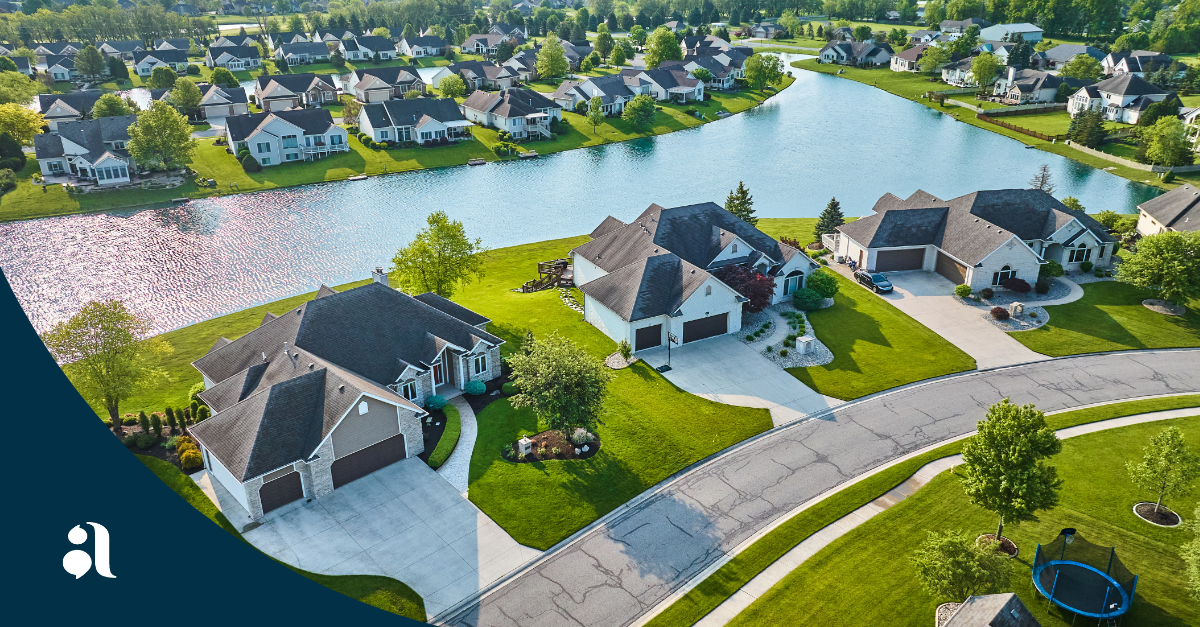
How to Connect Fragmented HOA Systems Effectively
Across the HOA industry, the tools designed to support communities often do the opposite—create confusion, duplicate effort, and dilute your community vision and brand. Event platforms, amenity systems, and communication tools all live in separate silos, each with their own interface and limitations. Residents must navigate a maze of logins while HOA staff are left updating the same resident data across multiple platforms.
It’s frustrating—and costly.
But there’s a better way. As your trusted advisor, Alosant is not just another tech vendor, we understand how to connect fragmented HOA systems into one cohesive, branded, mobile-first experience. This guide explores how consolidation improves operations, elevates the resident experience, and ultimately helps you do more with less—especially as you approach budget planning season.
Let’s break down the problems, explore the solution, and give you the tools to lead your community confidently into the future.
How to Connect Fragmented HOA Systems: Identifying the Problem
When a community’s digital experience feels more like a patchwork quilt than a seamless solution, both residents and staff suffer. The challenges are more than just minor headaches—they impact efficiency, resident satisfaction, and your bottom line.
Here’s what fragmented systems look like in the real world:
- Disjointed Platforms: Your team uses one system for amenity reservations, another for events, and a third for resident communication. None of them are connected.
- Resident Frustration: Residents juggle multiple usernames, interfaces, and app experiences—none of which are aligned with your community’s brand.
- Manual Data Entry: Want to make a change? Your team needs to work through a third party team often taking weeks to complete the change.
- Brand Inconsistency: Different platforms mean different styles, language, and messaging. That weakens the unified identity your HOA strives to maintain.
- Budget Waste: Maintaining several contracts, training on multiple tools, and paying for overlapping features inflates your technology spend.
These problems add up—and if left unaddressed, they lead to missed opportunities and increasing resident dissatisfaction.
Creating a Unified Foundation Through Consolidation
The first and most important step in solving this is system consolidation. It’s not just about reducing the number of tools—it’s about simplifying and strengthening the entire resident and staff experience.
Benefits of consolidating your HOA systems into one mobile-first platform:
- One App, One login, One Experience: Residents access amenities, RSVP to events, receive announcements—all from a single, branded app.
- Single Source of Truth: Resident data is centralized. No more scattered, outdated databases.
- Cohesive Brand Identity: From login to event registration, everything reflects your community—not a vendor’s logo or aesthetic.
- Efficient Operations: Staff perform tasks faster, with less redundancy.
- Improved Resident Trust: A modern, streamlined interface shows residents that you take their experience seriously.
A unified platform doesn’t just work better—it feels better for everyone involved.
Aligning Workflows Across Functions
Consolidating systems is only powerful if the workflows within those systems actually connect. That’s why knowing how to connect fragmented HOA systems also means rethinking how your processes flow across departments.
Here’s how a connected system transforms common HOA workflows:
- Booking to Access Control: When a resident books a tennis court, access is automatically granted during that time—no additional steps.
- Resident Updates Across All Systems: Change a name, phone number, or lease status once—and it’s instantly reflected in events, access, and communication modules.
- Automated Notifications: Bookings, changes, and alerts are sent via push, text, or email, without requiring a separate messaging platform.
- Seamless Admin Experience: Teams no longer need to log into multiple platforms to do one job.
It’s not just tech working better—it’s operations running smoother.
Stretching Your Budget by Consolidating Systems
HOA budgets are tight. That’s why a system built with efficiency in mind offers value well beyond tech. Learning how to connect fragmented HOA systems now can lead to long-term savings and operational stability.
Here’s how consolidation supports your financial goals:
- Fewer Vendor Contracts: One partner reduces overhead and complexity.
- Lower Training Costs: Train once, not five times.
- Reduced Maintenance: A single platform is easier to support than multiple disconnected systems.
- Offset Costs with Access Control: Replacing standalone access tools can reduce hardware expenses like additional key FOBs while offering better control.
- Increased Efficiency: Time saved on administrative tasks adds up—and time is money.
Heading into budget season, consolidation isn’t a luxury—it’s a smart financial move.
Delivering a Modern, Branded Resident Experience
Your residents don’t just want easier access—they want a digital experience that matches the quality of the community they live in. Every interaction is a reflection of your HOA. So it must be intentional, polished, and personalized.
Why resident experience matters when connecting fragmented HOA systems:
- One App Does It All: Residents no longer need to guess where to go for event info, amenity bookings, or updates.
- Consistent Branding: Every touchpoint—colors, fonts, tone—reflects your community culture.
- Easy Navigation: A user-friendly design removes friction and boosts adoption.
- Unified Messaging: Announcements, updates, and alerts feel like they come from you—not a faceless vendor.
You’re not just offering functionality—you’re reinforcing your identity with every tap.
Choosing the Right Technology Partner
All platforms are not created equal. And all partnerships are not equally valuable. If you're going to unify systems, you need a collaborator who respects your goals, supports your vision, and truly builds with you.
What to look for in a trusted technology partner:
- Trusted Advisor Mentality: Not just a vendor, but a strategic partner who listens.
- Configured just for You: The platform reflects your workflows, your aesthetic, your priorities.
- Amplifies Your community: Residents interact with your community—not the technology provider.
- Long-Term Support: Needs change—your platform should evolve with them.
At Alosant, we’re not here to put our name in lights. We’re here to help you elevate yours.
Step-by-Step: How to Connect Fragmented HOA Systems the Right Way
Want to connect your systems and get it right the first time? Follow this proven roadmap:
- Audit Current Systems
- Inventory what you use today: for events, amenities, access, communications.
- Identify pain points: duplicate entries, resident complaints, cost inefficiencies.
- Inventory what you use today: for events, amenities, access, communications.
- Define Key Workflows
- Focus on the experiences that matter most—like event registration, amenity access, and announcements.
- Focus on the experiences that matter most—like event registration, amenity access, and announcements.
- Set Budget Parameters
- Determine what consolidation can offset and what savings look like.
- Determine what consolidation can offset and what savings look like.
- Select the Right Partner
- Look for someone who aligns with your values, respects your community culture, and supports you beyond launch.
- Look for someone who aligns with your values, respects your community culture, and supports you beyond launch.
- Design with Intention
- Customize colors, layout, and modules to reflect your community’s feel.
- Customize colors, layout, and modules to reflect your community’s feel.
- Migrate Smartly
- Move resident data cleanly, avoiding duplication and data loss.
- Move resident data cleanly, avoiding duplication and data loss.
- Train Your Teams Thoughtfully
- Make onboarding intuitive and empowering.
- Make onboarding intuitive and empowering.
- Pilot with Purpose
- Soft-launch with a segment of your community to gather feedback.
- Soft-launch with a segment of your community to gather feedback.
- Launch Publicly and Clearly
- Communicate the “why,” and highlight how the new system benefits everyone.
- Communicate the “why,” and highlight how the new system benefits everyone.
- Iterate with Confidence
- Collect feedback, monitor usage, and continue to refine.
Done right, this isn’t just an upgrade—it’s a transformation.
The True Impact of Connecting HOA Systems
Connecting systems isn’t about technology—it’s about people. It’s about how residents feel when they interact with their community. It’s about how efficient and confident your staff can be. It’s about using smart tools to stretch every dollar.
When you understand how to connect fragmented HOA systems, you don’t just build better processes. You build a stronger community—one that reflects your identity, respects your residents’ time, and supports your long-term vision.
Real-World Scenarios: Life Before and After Connecting HOA Systems
Sometimes, the best way to see the value of change is through contrast. Let’s look at a fictional—but all-too-familiar—community scenario that shows what life is like before and after system consolidation.
Before
In a mid-sized master-planned community, residents had to log into multiple portals:
- A third-party site for amenity reservations
- A clunky CMS for event RSVPs
- A separate email system for announcements
- An outdated tool for access control
Every tool looked and behaved differently. A resident signing up for a fitness class would then need to contact the office to ensure they had proper gate access. Staff had to confirm participation manually, create a separate access code, and then enter it into a disconnected system.
After
Post-consolidation, the same resident opens their community-branded mobile app.
- They see upcoming fitness classes on the homepage.
- A simple tap reserves a spot.
- Access permissions automatically update.
- A push notification confirms their reservation.
Everything is smooth, unified, and on-brand. The resident never has to ask, “Where do I go for this?”—and the staff never have to input the same information twice.
Outcome: Higher satisfaction, reduced support calls, more efficient working hours, and a stronger brand impression.
It’s this kind of transformation that builds community trust and long-term engagement.
Future-Proofing Your HOA: Planning for What’s Next
HOA technology isn’t just about today—it’s about what your master-planned community will need in five or ten years. By learning how to connect fragmented HOA systems now, you lay the groundwork for growth, agility, and innovation.
Why Future-Ready Matters
- Community Growth: As your population grows or demographics shift, your systems need to scale seamlessly—not require another patchwork fix.
- Changing Resident Expectations: Tech-savvy residents—especially millennials and Gen Z homeowners—expect mobile-first, responsive platforms.
- New Amenities and Services: Adding a dog park, coworking lounge, or new event space shouldn’t require a whole new tool.
- Data and Reporting: A unified system gives leadership a full view of resident engagement, bookings, and usage—critical for informed decision-making.
- Security and Compliance: With one trusted platform, you reduce exposure to data breaches and inconsistent data handling across systems.
Final Thought: Being proactive now means avoiding painful tech overhauls later. One system. One investment. Future-ready.
Resident Adoption: Ensuring Your Community Embraces the Change
Even the best system means little without adoption. Fortunately, when the experience is thoughtful, intuitive, and branded, residents engage—because it actually makes their lives easier.
How to Drive Resident Engagement Post-Launch:
- Pre-Launch Communication: Build excitement with teaser emails, flyers, or even short video walkthroughs.
- Onboarding Support: Offer easy-to-follow guides, app tutorials, or live demos for residents.
- Branded Experience: Make sure the app looks like your community from day one—logo, colors, and tone included.
- In-App Feedback Options: Allow residents to share comments or questions directly within the platform.
- Celebrate Success: Share engagement wins—like how many residents signed up for an event through the app—to build momentum.
Why It Matters
When residents use the system, they become more connected to the community—and to each other. A well-adopted platform isn’t just technology. It’s infrastructure for belonging.
Let’s Build It—Together
At Alosant, we don’t just provide software—we collaborate with communities like yours to create resident experiences that are seamless, on-brand, and built for the long haul. Our platform brings together events, amenities, communications, and access into one unified mobile app—developed with you, tailored to your needs, and designed to amplify your community—not ours.
If you're ready to stop stitching systems together and start creating a better digital experience, we're here to help.
Reach out to Alosant today and discover how to connect fragmented HOA systems in a way that builds trust, saves time, and sets your community up for lasting success.
Conclusion: Reimagining the Future of Community Management
At the heart of every homeowners’ association is a mission to create safe, connected, and thriving communities. But when your digital tools are disjointed—when event platforms, communication channels, and amenity systems live in separate silos—you're working against that mission, not advancing it.
Learning how to connect fragmented HOA systems is no longer just an operational decision. It's a strategic one. It's about reclaiming your brand, respecting your residents’ time, and giving your team the tools they need to work efficiently and confidently.
With the right partner—a partner who serves as a trusted advisor, who builds solutions with you, and who focuses on amplifying your community brand, not their platform—you create a foundation that supports every aspect of your HOA. From budget efficiency to resident satisfaction to future readiness, consolidation delivers measurable value.
The good news? You don't have to overhaul everything overnight. But you do have to start. Because every day spent juggling fragmented systems is a day your community misses out on something better.
Let’s move forward—together—with a platform that’s as strong, seamless, and smart as the community it supports.
Frequently Asked Questions About How to Connect Fragmented HOA Systems
How do you connect fragmented HOA systems?
You connect fragmented HOA systems by consolidating event, amenity, communication, and access tools into one mobile-first platform. This reduces inefficiencies, enhances resident experience, and creates a cohesive community brand.
Why is it important to connect fragmented HOA systems?
Connecting fragmented HOA systems improves efficiency, lowers tech costs, and delivers a consistent, branded experience. It simplifies life for both residents and staff while supporting long-term community growth.
What is the best way to manage fragmented HOA systems?
The best way to manage fragmented HOA systems is to unify them under one app that handles all functions—like Alosant’s platform—streamlining operations and removing redundancies.
What are the benefits of connecting HOA systems?
Benefits of connecting HOA systems include better data accuracy, reduced manual work, improved resident engagement, consistent branding, and simplified budgeting through vendor consolidation.
Further Reading
- The Complete Guide to HOA Software
- How HOA Management Software Improves Homeowner Communication
- 20+ Best HOA Events to Bring Your Community Together
- PropTech for Community Living That Pays Off
- Master Planned Communities Need Better Event Management—Here’s How



